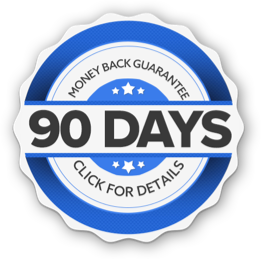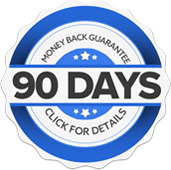At GLX3, we know you care about putting the healthiest foods and supplements into your body.
We do, too.
So, when something comes out in the news about green lipped mussels, we’re there to make sure you have all facts.
In today’s post, we’ll break down the recent report of contaminated Seattle green lipped mussels, explain what the scientists actually found, and let you know why there’s no reason for you to worry about the findings.
Let’s take a look!
Where Were the Mussels Found?
The contaminated bay mussels, which are not green lipped mussels, grew in Puget Sound off the coast of Seattle, WA in the United States.
Researchers pulled the mussels from highly urbanized bay areas where wastewater management plants can’t filter all drugs before releasing the water into the sound. These bays are not where restaurants or supplement companies farm their mussels.
They pulled them from waters susceptible to urban runoff over 10,000 kilometers from the pristine New Zealand waters where GLX3 farms their green lipped mussels.
What Did Scientists Find in the Mussels?
The amount of contaminants found in these mussels was not enough to affect human or mussel health.
But don’t take our word for it:
Puget Sound Institute’s Andy James, who assisted with the study, said ‘oxycodone was found in amounts thousands of times lower than a therapeutic dose for humans and would not be expected to affect the mussels, which likely don’t metabolize the drug’.
What Does the Finding Mean?
As filter feeders, mussels serve as good indicators of environmental health and water purity of the ecosystem they live in.
Mussels do not produce these substances on their own.
This means that these findings are NOT indicative of toxic chemicals in New Zealand green lipped mussels in their natural state, but of the waste plant’s inability to fully filter waste water before pumping it into the sound. In addition, it showcases the high use of specific drugs in these urban Seattle bay areas.
It also means you won’t find contaminants like this in our New Zealand green lipped mussels.
Here’s why:
How is GLX3’s Green Lipped Mussel Farming Better?
It all starts with the potent, nutrient-rich ocean waters off of New Zealand’s eastern coast. Ninety Mile Beach is the sort of epicenter of the species, but they thrive along a vast stretch of the waters on this side of the country.
Check out our GLX3 video documentary or article to see how we farm green lipped mussels!
The mussels that we use in our supplement are top-quality and raised by experienced farmers who have mastered the craft of harvesting only mussels that are of a specific caliber. Farmers place spat, which are young mussels before they fully develop, in farming colonies underwater and raised at various depths until they are ready for harvest. The typical growing cycle is between 14 and 18 months, depending on conditions in the farm and other factors such as predation and weather.
What do GLX3 green lipped mussels eat?
Green Lipped Mussels eat phytoplankton from the ocean. This actually works out really well for us, as we absorb the benefits of the phytoplankton when we take Green Lipped Mussel supplements.
It also means that when our mussels filter the contaminant-free water found in our farms, we stay contaminant free!
Because the sun’s rays are unusually intense in the areas where the mussels grow, the plankton must protect themselves from the potentially deadly high levels of ultraviolet (UV) radiation. Over time, they have developed powerful antioxidants to fight the stress caused by the radiation. When the mussels eat their food, they absorb these protective mechanisms. And the cycle continues – when you consume their extracted oil, you get the benefits of these protective properties.
Why aren’t GLX3 mussels harvested from urban bay areas like those in the study?
We farm GLX3 mussels in clean waters so we can monitor them throughout their development to ensure health and proper growth. They remain protected from many predators and receive the proper nutrients from nutrient-rich waters in a pure ecosystem.
Unlike the urban bays off the coast of Seattle, we host Green Lipped Mussel farms in areas that allow for open circulating of the water, meaning they aren’t sitting there in the same stale water for days at a time. The government strictly monitors the farms to make sure they keep up with health and environmental regulations.
Also, the mussels grow protected from hazards such as runoff from the land and plants and algae that may be harmful. The New Zealand Marine Biotoxin Authority ensures that the farms meet all standards and monitor any biotoxin alerts that may affect shellfish in the area.
Final Word: Healthy New Zealand green lipped mussels
At GLX3, our mussels grow strong and healthy off the untouched coasts of New Zealand, thousands of kilometers from the contaminated waters of Puget Sound. They take in water from an environment overflowing with nutrients and minerals and pass their benefits on to you to help you fight inflammation.
You can be sure the city of Seattle will want to clean up the water they’re dumping into their bays.
As for us, scientists aren’t concerned about the health of green lipped mussels from our farms.
But if you have any questions about our farming processes, we’re big on transparency and trust:
Check out our brand new documentary showcasing the way GLX3 goes from the ocean to your doorstep, and message us at any time.
We’re always happy to help!


















